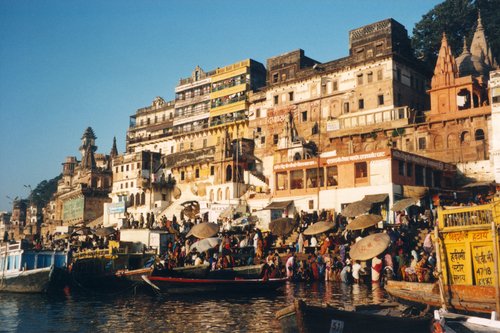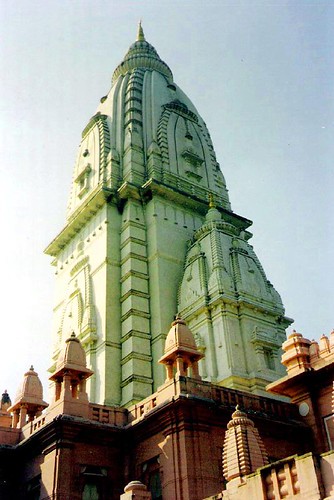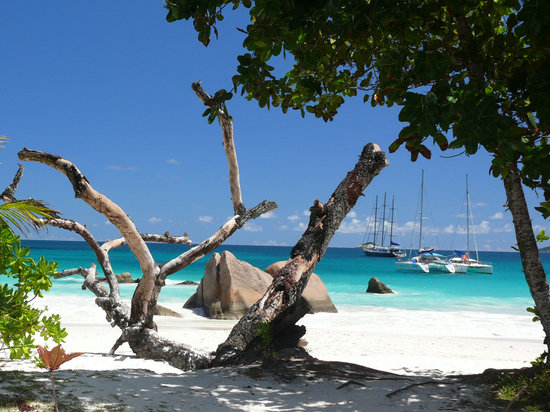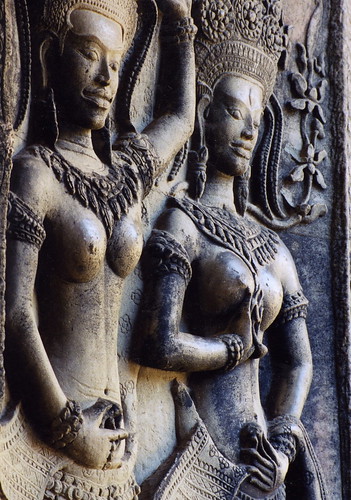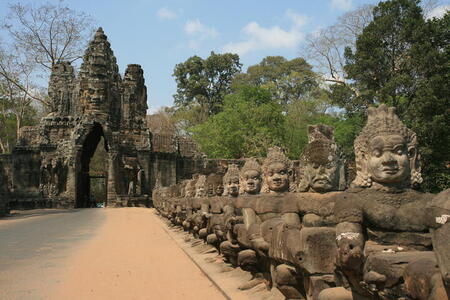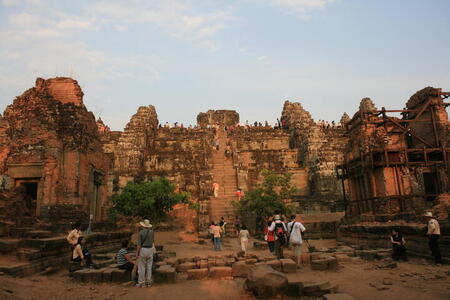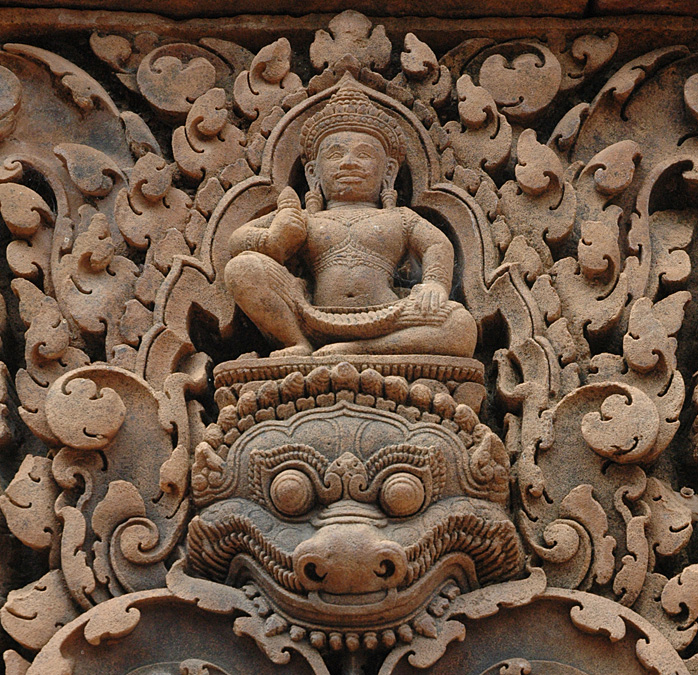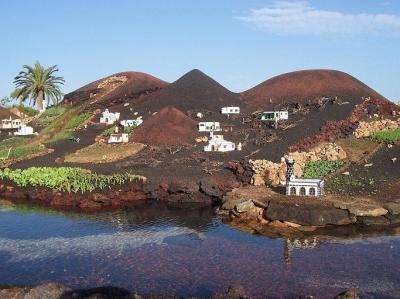
The Cyclades islands, Greece are composed of 39 islands of which 24 are inhabited. The Cyclades are the most famous of all Greek islands with Amorgos, Anafi, Andros, Antiparos, Delos, Ios, Kea, Kimolos, Folegandros, Milos, Mykonos, Naxos, Paros, Santorini, Serifos, Sikinos, Sifnos, Syros and Tinos. Travel there, where one can find vivid cosmopolitan nightlife and at the same time tranquility and peace.
Amorgos
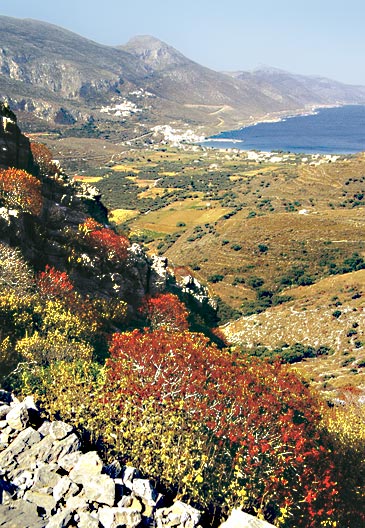
Amorgos Greece is a popular islands of the Cyclades. It is the island that was chosen by filmmaker Luc Besson for the scene of “The Big Blue”. The island’s trademark is the beautiful monastery of Hozoviotissa which is wedged into a huge precipice at 300m from the sea. The Greek island of Amorgos has a lot to offer: beautiful beaches in crystal waters, whitewashed houses and windmills, Venetian castles.
Andros

Andros Greece is only an hour and a half away from Athens. Andros is a very attractive island whith some traditional and very picturesque villages. The fortified capital of the island is a real jewel which combines Venetian and Cycladic architecture, narrow stone paved alleys, arcades and bright coloured flowers. Andros is a great holiday destination.
Antiparos


The Greek island of Antiparos Greece is a small island of the Cyclades located just next to Paros Island. This island is a nice destination for holiday or for a day excursion from Paros. It is a small island with 57 km seashore.It has a charming village where most activities are concentrated and also many beaches. The island was mostly known for a stalactite cavern and in the 1980s for the "Rock and Roll" lifestyle of the tourists.
Folegandros
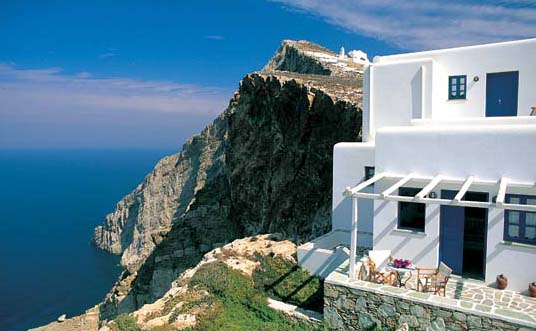
Folegandros Greece is an enchanting little island of the Cyclades group, in the Aegean Sea. It is a place where you can go to relax. Folegandros hasn’t been impacted by mass tourism and still holds its traditions and character. The most impressive thing about Folegandros is the spectacular landscape. There are several small villages, but the capital and the port town Karavostasi is where most of the accomodations and entertainment are found.
Ios

The island of Ios, in Greece, is a part of the Cycladic Islands. It is famous for its intense nightlife which can be experienced in the touristy and lively beach resort of Mylopotas and in the harbor named Ormos. But aside the fun, Ios has many beautiful sights to offer to visitors and various quiet and peaceful places. Its coastline is adorned by kilometers of fine soft sand and crystalline emerald waters which are a real temptation.
Kea

Island Greece is part of the Cyclades group of Islands. It is also known by the name Tzia and lies to the south of Lavrion town, Attica. Kea counts on important archaeological sites, locations of unique natural beauty, wonderful beaches and picturesque villages surely worth visiting. Nightlife is mostly concentrated in Vourkari and most accommodations in Korissia.
Koufonisia

Koufonisia Greece is a mesmerizing set of little islands of the Cyclades group, in the Aegean Sea. It is an ideal place to go in order to unwind and relax. There are many fantastic beaches to visit including some that can only be reached by foot or even by boat. Koufonisia is known for the many caves that can be found everywhere on the island.
Kythnos
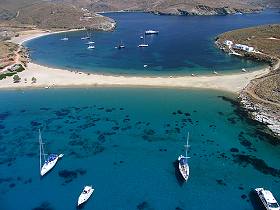
Kythnos Greece, the island of Apollo, is a beautiful mountainous island located in the western part of the group of islands called the Cyclades. The Greek Island of Kythnos is quite a verdant island, full of olive trees which are creating a beautiful scenery along with the glimmering white of the flat roofed houses, the deep blue and turquoise sea and the bright red and fuchsia of the bougainvilleas.
Milos

Milos Greece is a wonderful island of the Cyclades, Aegean, full of surprises, charms and beauties. It is mostly known for the statue Venus of Milo (Aphrodite) and its rich natural resources. Milos is unique for its astonishing lunar landscape which creates unbelievable and imposing rocky formations coloured in deep red, brown or glimmering white. Those fantastic hills and rocks are often emerging from a turquoise sea, boarded by fine golden, white or grey sand.
Mykonos

Mykonos island is part of the Cyclades islands group, in the Aegean Sea. Mykonos Greece is the most famous and popular Greek island and attracts thousands of visitors every year. Mykonos island is famous for its cosmopolitan atmosphere, its exciting nightlife, its picturesque Cycladic capital full of whitewashed houses and blue domed churches and its magnificent sandy beaches.
Naxos
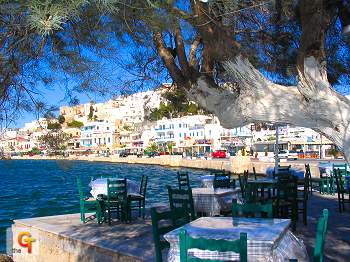
Naxos Greece is the biggest and largest island of the Cyclades Greece, in the Aegean Sea. It is the nuptial isle of the god Dionysus and has the highest mountain of the group, Mount Zas. The island was for many centuries under the rule of the Venetians and Marko Sanudo. Naxos Greek Island is characterized by its venetian town, its many picturesque and wonderful mountainous villages, the fertile valleys, the long golden sandy beaches of the group and the crystalline turquoise waters, the marble gate called Portara and the Kouros.
Paros

The Greek island of Paros Greece is one of the most popular and touristy destination. The Greek island is located in the heart of the Cyclades, in the Aegean sea, near Naxos. It attracts thousands of visitors every year. And the reasons are obvious: exquisite sandy beaches in crystal waters, traditional villages with whitewashed cubic houses in narrow paved alleys contrasted with the many bougainvilleas, lovely chapels, an exciting nightlife.
Santorini

The Greek island of Santorini Greece or Thera is located in the Cyclades islands, in the middle of the Aegean Sea . Santorini, Greece is, along with Mykonos, the most famous Greek holiday destination. It is a small group of volcanic islands and its name was given by the Venetians in reference to Saint Irene. The island was also called Strongili and Kalisti and was the site of one of the largest volcanic eruptions but what remains today is a submerged volcano and a caldera.The island of Santorini is related to the myth of Atlantis, the amazing views from the villages of Fira, Oia perched on cliffs, the sunset, the black and red beaches, the wine .
Serifos
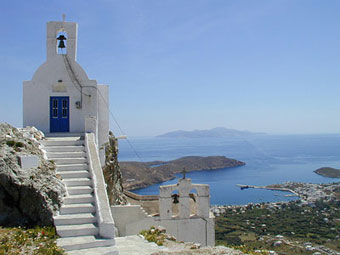
Serifos Greece is a mesmerizing set of little islands of the Cyclades group, in the Aegean Sea. Serifos is an ideal place to go in order to unwind and relax. There are many fantastic beaches to visit including some that can only be reached by foot or even by boat. Serifos is known for the many caves that can be found everywhere on the island.
Sifnos
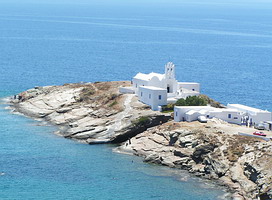
Sifnos Greece, the island of Apollo, is a beautiful mountainous island located in the western part of the group of islands called the Cyclades. The Greek Island of Sifnos is quite a verdant island, full of olive trees which are creating a beautiful scenery along with the glimmering white of the flat roofed houses, the deep blue and turquoise sea and the bright red and fuchsia of the bougainvilleas.
Sikinos
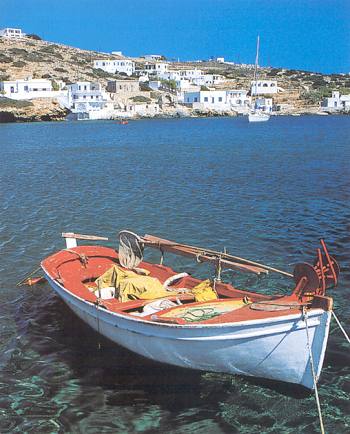
Sikinos Greece, Sikinos is a tiny island in the southern Cyclades between the islands of Ios and Folegandros. Because of its size, it is ideal for a pleasant and peaceful holiday. Mass tourism hasn't reached Sikinos in any true sense yet and you'll find that the islanders speak only a few words of English, but that they are very friendly and do their best to make you feel welcome.
Syros

Syros Greece is a Cycladic island and its wonderful capital, Ermoupolis, is the capital of all the Cyclades. The Greek island of Syros is full of beauties and charms created by its unspoiled landscape, its authenticity and its traditional villages. The town of the island is full of Venetian and neoclassical buildings which make it one of the most beautiful towns of the country. Nice beaches with crystalline waters and a medieval village can be found.
Tinos
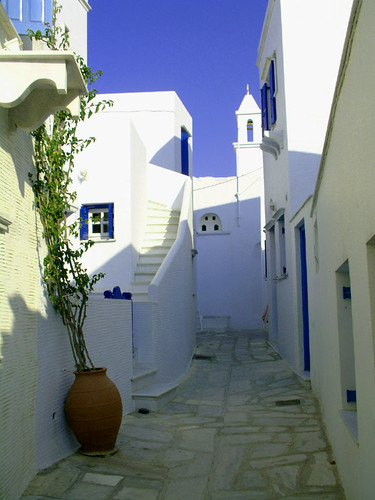
Tinos Greece is one of the biggest Greek islands of the Cyclades. Tinos is famous, among religious, for its huge Church of Panagia (Virgin) which has a miraculous icon and is attracting thousands of pilgrims from all over the country on the 15th of August, feast day of the Virgin. The island has many picturesque mountainous villages, superb dove cotes which are embellishing it and a tradition in marble carving.
Transportation
Water
Ferry
Ferry routes separate the Cyclades into western, northern, central and eastern subgroups.
Most ferry services operating within the Cyclades connect one of these subgroups with the ports of Piraeus, Lavrio or Rafina on the mainland. The central Cyclades (Paros, Naxos, Ios and Santorini) are the most visited and have the best ferry links with the mainland, usually to Piraeus.
The northern Cyclades (Andros, Tinos, Syros and Mykonos) have excellent connections with the mainland. The mainland port for Andros is Rafina, but it’s possible to reach Andros from Piraeus by catching a ferry to Syros, Tinos or Mykonos and connecting from there.
Lavrio is the mainland port for ferries serving Kea, from where connections south to the other western Cyclades are not good.Kythnos has a reasonable number of connections to Piraeus and good connections south to other islands. Milos, Serifos and Sifnos have seen greatly improved ferry connections with Piraeus in recent years. Folegandros and Sikinos have less frequent connections with the mainland.
The eastern Cyclades (Anafi, Amorgos, Iraklia, Schinousa, Koufonisia and Donousa) are the least visited and have the fewest ferry links with the mainland. However, for the foreseeable future Blue Star Ferries is running a regular service to Amorgos, Iraklia, Schinousa, Koufonisia and Donousa. These islands also have a daily service in summer to and from Naxos. Anafi is best reached from Santorini.
When planning your island-hopping it pays to bear this pattern of ferry routes in mind; however, Paros is the ferry hub of the Cyclades, and connections between different groups are usually possible via this port.
Boat
Fast boat & catamaran
Large high-speed boats and catamarans are a regular feature on Cyclades’ routes, mainly during the late spring to early autumn period. Their travel times are usually half those of regular ferries. Seats fill fast in July and August, especially on weekends, so it’s worth booking your ticket a day or so in advance. For some travellers, the downside to using the smaller fast ferries is often the need to book well ahead; the regimented seat allocations; the absence of deck space; the limited view and the possible queasiness from being on these ferries, the result of rough sea conditions and the inescapable company of fellow sufferers. High speed certainly, but when there’s a swell, there also can be an element of high roll.
Air
Olympic Airlines (www.olympicairlines.com) has flights between Athens and Naxos, Syros, Santorini, Mykonos, Paros and Milos. From Mykonos there are flights to/from Thessaloniki, Santorini and Rhodes.
Aegean Airlines (www.aegeanair.com) flies to Mykonos and Santorini from Athens and Thessaloniki.
Sky Express (28102 23500; www.skyexpress.gr) flies to Santorini from Athens and on from Santorini to Rhodes.
Until suspension of operations in July of 2007, the innovative AirSea Lines (www.airsealines.com) ran seaplane flights daily from Thursday to Monday between Lavrio (in southern Attica) and Mykonos, Paros, Ios and Santorini. It also ran flights daily from Thursday to Monday between Mykonos and Kalymnos and Kos (both in the Dodecanese).
Due to upgrading requirements the company suspended its Aegean schedule in July 2007. The schedule was still suspended at the time of writing (September 2007). The company states, however, that it will resume its Aegean service as soon as possible and readers are advised to check the company website..
